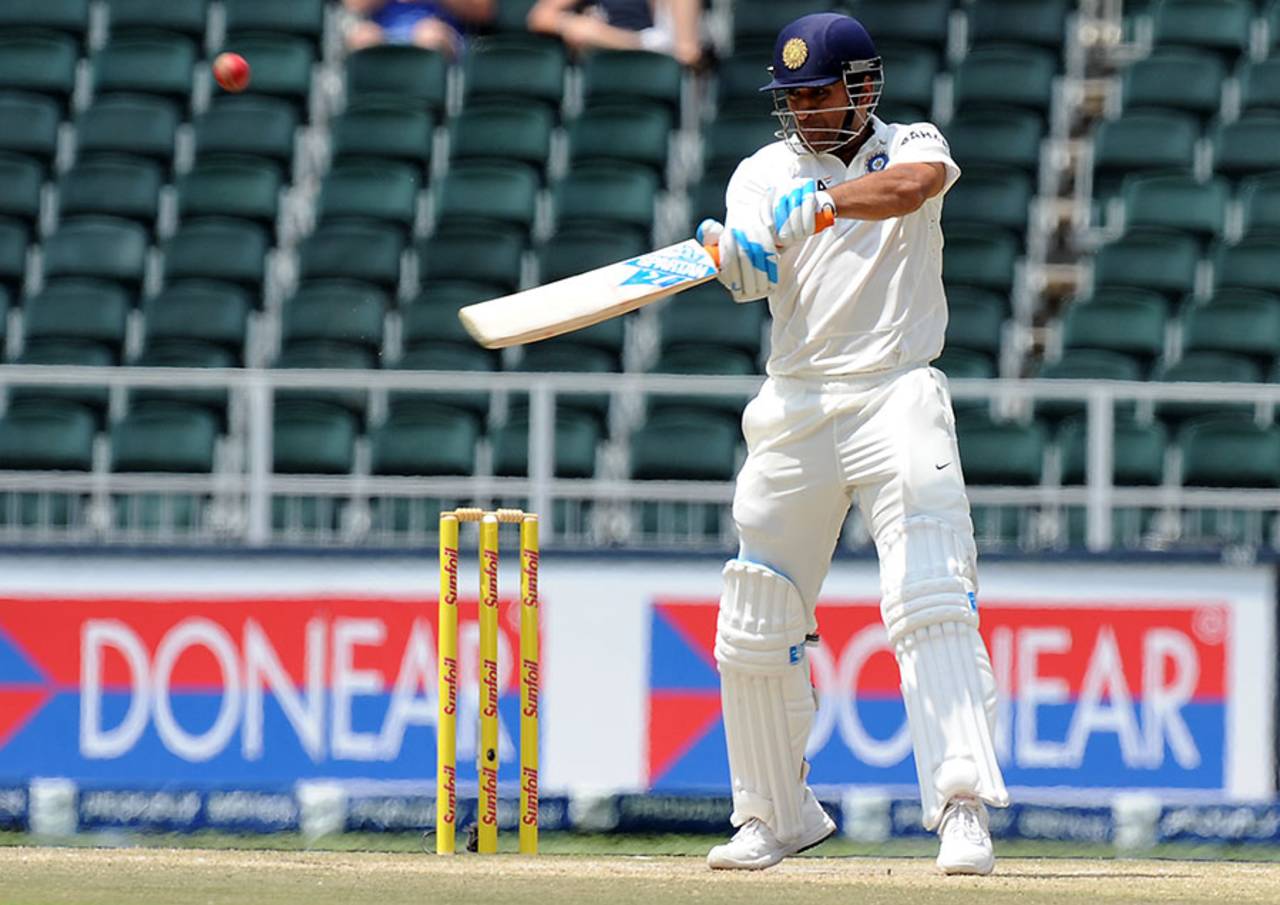Why Dhoni hates No. 7 and Swann hates No. 8
Otherwise known as part two of the Curiously Disappointing in a Particular Batting Position Test XI

MS Dhoni: not the seventh wonder of the world • AFP
2. Mark Taylor - averaged 36.1 at number 2; 52.0 at No. 1
3. Norman O'Neill - averaged 32.0 at number 3; 57.4 at No. 4
4. David Gower - averaged 38.3 at number 4; 49.4 at Nos. 3 or 5
5. The Nawab of Pataudi jnr (captain) - averaged 26.2 at No. 5; 46.0 elsewhere
No. 6 was, unquestionably, Botham's position. He owned it for as long as he was fit. Or, in the latter stages of his career, even partially fit, when injuries had taken such a toll that his aura had far better averages than his body. Botham is one of the first names on most all-time England XIs, a match-shaping force of nature, who, in his early years in Tests, was the most complete allrounder that cricket has produced. Botham at 6, plus ten others. In fact, if we are talking about a Botham in his magnificent, statistic-melting, and disappointingly short-lived pomp, you could pick Botham at 6, plus seven or eight others, just to give him a challenge.
* Mohammad Azharrudin (India; 32 innings at 6, average 34.2; 94 innings at 5, average 48.8).
* Brian McMillan (South Africa; 23 innings at 6, average 26.8; 23 innings at 7, average 58.3). Statistically, the greatest No. 7 batsman in Test history. If you judge these things purely by batting average and having played a minimum of 15 innings.
Also, one of the worst established No. 6s that has ever disgraced the five-day game.
Counting only innings at 6 and 8, out of the 411 batsmen who have played in those positions a minimum of ten times, Dhoni has the best average in Test history. He averages mid-to-high 60s in both positions. As a No. 7, however, where he has played more than three-quarters of his Test innings, he nestles in the statistical foothills, amongst the likes of less-garlanded and lower-earning wicketkeepers Ridley Jacobs, Prasanna Jayawardene and Rashid Latif, and only slightly ahead of his Indian predecessor Parthiv Patel. A statistical quirk of the highest order.
* Mark Boucher (South Africa; 124 innings at 7, average 26.0; 72 innings at 6 or 8, average 38.8). Also a massive fan of batting in an even-numbered position. Both Dhoni and Boucher are inverse Alan Knotts. The Kent gloveman averaged 41 as a No. 7 for England, but only 23 when batting 6 or 8.
I have bent the qualification criteria to include Swann, because his average as a No. 8 batsman, although garnered from only 13 innings, was what initially sowed the seeds for this blog. Statistically, Swann is Test cricket's best ever No. 10, and second only to Broad as an England No. 9 (15 innings minimum in both cases). He was a magnificent striker of the ball, and played a number of important innings under pressure. Technically, you would assume there is no practical difference between batting at 8 and batting at 9 or 10. But Swann, in his innings at 8, has a highest score of 32, and had the fifth worst average of the 43 players who have batted at least ten times at No. 8 for England, behind Andy Caddick (who, conversely, averaged 14 at Nos. 8, 10 at number 9, and a pitiful 6.9 at No. 10).
* Ajit Agarkar (India; 23 innings at 8, average 12.3; 16 innings elsewhere, average 23.2).
Lindwall's bowling was so brilliant that his excellence with the bat is sometimes overlooked. The Eddie Hemmings of his day. The post-war paceman scored a 90-ball century in his fourth innings for Australia, batting at 9 at the MCG against England. For the rest of his career, however, he averaged under 13 when batting there, despite it being his regular position in the order. As a 7/8, however, he was statistically more effective than either Benaud or Davidson, both of whom are more highly regarded as allrounders.
* Bill O'Reilly (Australia; 17 innings at 9, average 8.5; 21 innings at 8, 10 or 11, average 18.9).
A decent No. 8; an acceptable No. 9; a truly abysmal No. 10. DeFreitas seemed to bat according to the expectations of his batting position. If England had grabbed hold of the promising 20-year-old DeFreitas who toured Australia in 1986-87, and told him to bat at 3 for his entire career, he would have been the new Wally Hammond.
* Richard Collinge (New Zealand; 21 innings at 10, average 9.0; 29 innings at 9 or 11, average 18.4)
Despite a healthy proportion of not-outs, Gibbs was next to useless when going in last. He seemed to thrive on the added excitement and self-esteem of having someone even worse than him in the batting order.
* Lasith Malinga (Sri Lanka; 15 innings at 11, average 2.4; 22 innings at 9 or 10, average 15.1). Ditto. A worse average than Chris Martin at 11. Better than competent tailenders Steyn, Gough and Holding at 10.
Andy Zaltzman is a stand-up comedian, a regular on BBC Radio 4, and a writer